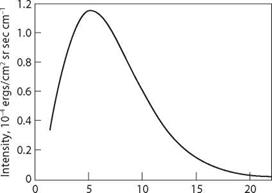The Hot Big Bang
Pivotal roles in science are often taken by outsiders. The “father” of the big bang model was a part-time lecturer at the Catholic University of Leuven when he published a paper in a journal that was little read outside Belgium. George Lemaitre was a Catholic priest who had moved from civil engineering into physics and astronomy. Einstein was initially skeptical, but at a seminar by Lemaitre in Princeton in 1935, he expressed his admiration for the beauty of the theory.
The other intellectual parent of the scientific theory of creation was a Russian emigre called George Gamow. This physicist was elected to the Academy of Sciences of the U. S.S. R. at the age of twenty-eight, the youngest person ever to gain that honor. With his student Ralph Alpher, he showed that the early hot universe could have produced the amount of helium we see, which is too much to have been produced by stars. Gamow jokingly had his colleague Hans Bethe listed on the paper so it would read Alpher-Bethe – Gamow, in a pun on the first three letters of the Greek alphabet; Bethe had no other role in the paper.14 In 1948, the same year, Gamow and Robert Herman predicted that the afterglow should have cooled down after billions of years, filling the universe with microwave radiation at a temperature of five degrees above absolute zero, or 5 K.15 However, nobody pursued the prediction, due in part to a lack of widespread awareness of the theory, and in part to the primitive state of microwave technology at the time.
The new theory was given its catchy name by Fred Hoyle in a BBC radio broadcast in 1949.16 Even though he advocated the rival “steady state” theory, which didn’t involve a hot and dense early phase for the universe, he claimed the label was descriptive and not pejorative. As Hoyle noted, with typically sardonic wit, the big bang was an audacious theory: the entire universe, holding enough matter to yield more than a trillion trillion stars in many billions of galaxies, somehow emerged instantaneously and without any precedent from an iota of space-time! Steady state theory called for the gradual creation of matter in the vacuum of space between the receding galaxies. Although spontaneous creation of matter was ad hoc physics, it seemed like a more modest proposition.
For fifteen years, the status of the theory remained tentative. The universal recession of galaxies certainly pointed to a time when the universe was smaller, denser, and hotter. The explanation of the fact that the universe is a quarter helium by mass (and 10 percent by number of atoms) was a success, but the difficulty of measuring cosmic abundances of other light elements meant no further progress could be made on testing this idea, called big bang nucleosynthesis. Counts of extragalactic radio sources indicated the population was evolving and argued against the steady state theory. The missing ingredient was a decisive observation that favored the hot big bang. It came by accident in 1964 when two engineers working at Bell Labs in Holmdel, New Jersey, detected a microwave signal of equal intensity in every direction in the sky (figure 12.2). NASA’s Wilkinson Microwave Anisotropy Probe, or WMAP, is the illustrious descendant of this pioneering experiment.
|
Waves/centimeter Figure 12.2. Theorists working with the expanding universe model predicted that the universe should be filled with relic radiation from the big bang, diluted and cooled by the expansion to just under 3 K. NASA’s COBE satellite measured the spectrum and shows the radiation had exactly the predicted temperature; the data fit the model so well that the error bars are smaller than the thickness of the curve (NASA/COBE/FIRAS Science Team). |











